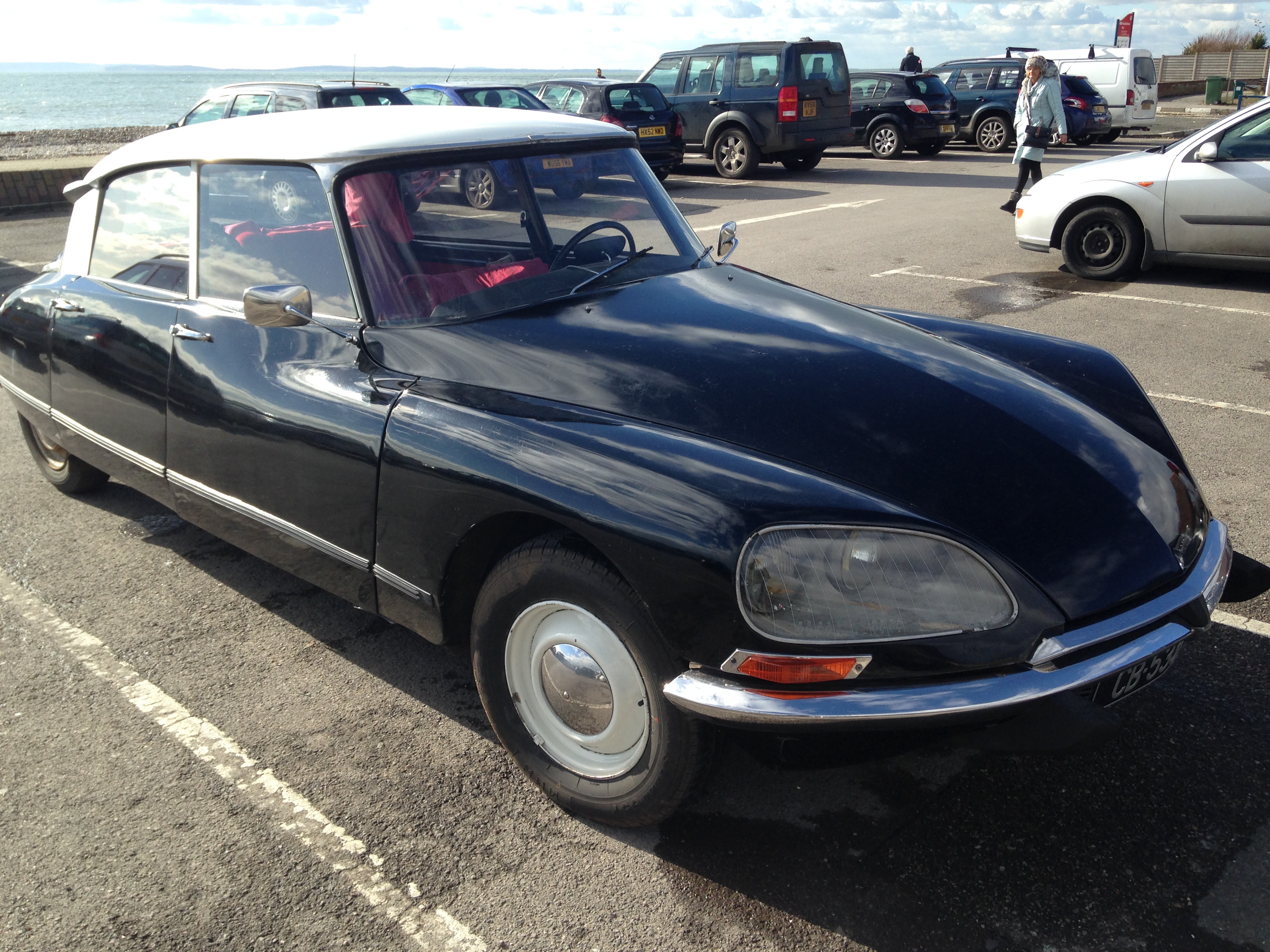-
Insurance
InsuranceAbout our productsLearn about insuringGet a quote Get current values, historical values, model history and more.
-
Valuation
ValuationHagerty valuation toolLook up a vehicle value Get current values, historical values, model history and more.
-
Events
EventsHagerty official eventsHagerty ClubhouseEvent calendar
-
Entertainment
EntertainmentMore to explore
- Portal login
1965 Citroen DS21
Décapotable Convertible 2.2 L
Vehicle values by condition
Fair
Condition 4
£112,000
#4 cars are daily drivers, with flaws visible to the naked eye. The chrome might have pitting or scratches, the windshield might be chipped.
Good
Condition 3
£140,000
#3 cars could possess some, but not all of the issues of a #4 car, but they will be balanced by other factors such as a fresh paint job or a new, correct interior.
Excellent
Condition 2
£193,000
#2 cars could win a local or regional show. They can be former #1 cars that have been driven or have aged. Seasoned observers will have to look closely for flaws.
Concours
Condition 1
£244,000
#1 vehicles are the best in the world. The visual image is of the best car, unmodified, in the right colours, driving onto the lawn at the finest concours.
Insurance premium for a
1965 Citroen DS21 Décapotable Convertible 2175
valued at £140,000
£599.06
/ year*
History of the 1965 - 1971 Citroen DS21

1965 - 1971 Citroen DS21
The Citroen DS21 is the 2175cc 109hp variant of the iconic Citroen DS model built between 1965 and 1972. Its predecessor was the DS19 and it was superseded by the DS23 in 1973. The DS21 was offered in 4-door saloon, 2-door convertible, estate and luxury ‘Pallas’ configurations. The car has a front engine, front-wheel drive configuration with a 4-speed semi-automatic gearbox.
The first DS21s used the same dramatic body shape penned by Flaminio Bertoni that had been unveiled almost a decade before on the DS19. In 1968 the car was given a major facelift by Robert Operon who introduced glazed driving lights that turned with the steering. American legislation prohibited the use of these, and four exposed, fixed lights were used instead in that market. At the same time the engine was developed to marginally raise the power output.
In 1969 a further power hike to 139 bhp was offered as an option through Bosche fuel injection, the DS being amongst the first production cars to have this. The early 70’s saw the introduction of fully automatic 4 speed and manual 5 speed gearboxes.
The Citroen DS21 has a hydro-pneumatic suspension system which makes the cars rise when started. The original oil used for this suffered from being hygroscopic (readily absorbing moisture from the air) and 1967 saw a change to a more stable fluid called “LHM”. The seals between the two systems react badly to the incorrect oil so the LHM is dyed green and parts painted accordingly to avoid mistakes.
Although the DS21 was primarily sold as a four door saloon, with the “Pallas” as the luxury model, other body styles were available. The estate was called the “Break”, “Safari”, “Familiale” or “Station Wagon” dependent upon market. It provided a large load carrying capacity with the “Ambulance” adding an asymmetric split on the folding rear seat. Rarest is the convertible either in the form of the factory “Cabriolet D’Usine” or the privately-produced 2 door version by Chapron. The unique DS21 Presidential became the only car that Charles D’Gaulle would ride in
As with previous iterations the DS21 had a less complex sibling in the ID21. This did away with the power steering and had conventional brakes, it was also always slightly less powerful than the equivalent DS21 model.
Despite the lack of power the DS saw some success in the sphere of motor sport but this is to ignore its primary intended role as a high end saloon. The DS21 does not reward press-on driving but rather cossets with its sophisticated suspension providing a very comfortable ride no matter what the state of the road surface. The engine is derived from the pre-war Traction Avant unit and therefore it was not exactly cutting edge, even though the DS21 saw the arrival of a 5 bearing crank. The brakes are highly sensitive but prove to be satisfactory once you have got used to the pressures required.
Rust is the big enemy of the DS, particularly around the boot area, rear chassis and sills. Rectification work can be costly and new panels fetch a premium. The engines and gearboxes are robust with many refurbished major components available at a price. The earlier hydraulic fluid should be replaced every 18 months.
The general rule is “the later the car the better” with injected models fetching more than their carburetted equivalents. The estate in turn is worth more than the saloon but the cabriolets are worth substantially more than other body styles.
The DS has always stood as a car apart from anything else on the road but if you were to look for an alternative then the Triumph 2000, the Rover P6 or Mercedes W114 would be worth considering.
Hagerty Newsletter
Get your weekly dose of car news from Hagerty UK in your inbox

ADVERTISEMENT